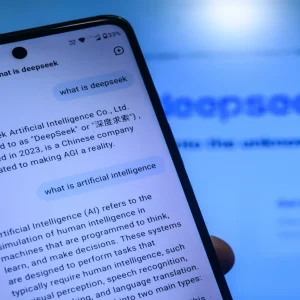
For many organisations, their principal focus is on the moment the customer signs on the dotted line – or today taps their phone against a card reader, writes Ed Hackworth, Solution Architect at DXC Technology’s Business Process Services group.

It can represent the culmination of a long or short purchasing process, and in many cases, the business also sees this as the end of their core engagement with that customer. However, there are lessons to be learned from sectors such as manufacturing who have benefitted from creating ‘digital twins’ of real-world purchases to gain continued customer engagement.
Some manufacturing firms have been embracing the concept to create virtual representations of the equipment purchased from them. The digital twin is not merely a simple representation, but rather an evolving digital profile enhanced by historical, current and projected behaviours of the physical object that create new value.
The digital twins of products such as industrial ovens, wind turbines, and cars are closely monitored to measure everything from operating performance to temperatures, heat generation, and wear and tear. By mining the real-time data of their assets and applying machine learning techniques, suppliers can work with customers to predict required maintenance, avoid unplanned downtimes and plan for profitable enhancements.
Digital Twins
Gartner has included the concept of a digital twin in its annual list of Top 10 Strategic Technology Trends for the past three years, but even then we have seen their point of view evolve. In 2017 the concept was described as: ‘A digital twin is a dynamic software model. Organisations will use digital twins for equipment service, manufacturing process planning and the operation of factories’. By 2019 this had evolved to: ‘A digital twin is a digital representation.
The focus today is on digital twins in the IoT, including the application of advanced big data analytics and AI to drive new business opportunities’. It’s clear Gartner has seen how the use of digital twins is no longer just limited to the manufacturing industry. It now has the opportunity to affect all other sectors as well.
While many organisations are focused on transactions like the card taps or the invoice, and less oriented to the long-term customer life cycle, we can build on industrial product success by identifying the ways transaction-based systems can contribute to, and benefit from, the digital twin of our customers.
Rather than focusing on single transactions, we need to shift to sustained engagement – where the digital twin opportunity lies. In retail, for example, the customer buying process begins long before the card is tapped and ends well after the transaction clears the bank.
We already have a large digital footprint offering insight into our user journey – which starts before we set foot into a physical store or visit an online retailer. We have personal profiles and purchase histories with retailers, travel agencies, rideshare services and fitness trackers.
Connected IoT Devices
We use connected IoT devices and have services like Google, Alexa and Siri in our homes, cars; wherever we go. And new customer journeys start every day for consumers. Consider your behaviours and near future needs. How is your supply of Nespresso pods for your coffee machine? How often do you add time to your microwave’s programmed cook times because your meal isn’t quite warm enough? Will you sit down today to start planning a holiday to a warmer destination during the winter months?
Even with this short list of normal consumer behaviours, a digital twin could initiate various predictable outcomes. Combining transactional data, such as the quantity and frequency of Nespresso pod purchases with insights from non-transactional knowledge such as family size, work location, and holiday history, allows the creation of a reliable model of an individual and to understand the point at which they are likely approaching their own personal reorder point for products or services.
Applying insights gained from product consumption and how connected devices are being used presents new opportunities for retailers. For example:
- The simple act of regularly adding 30 seconds after microwaving a meal could flag the need for a higher wattage model, or a timely offer for a service call to check the appliance.
- A holiday to a warm climate is an opportunity to offer location appropriate clothing proactively.
- Travel insight, combined with an uptick in fitness tracker data, may indicate a new fitness regime to prepare for an adventure vacation, indicating purchase motivations for that individual.
- Finally, insight into coffee pod use provides the ideal time to present the customer with availability information of their favourite flavours at locations conveniently located along their commute route.
- The end of the purchase journey is often concluded by a social media post, and the next purchase journey begins.
Businesses need to see that a sustained customer relationship is accomplished by delivering relevant solutions for the consumer when they are appropriate. There’s no need to show hundreds of adverts and offers, which are often perceived as a nuisance.
By applying digital twin concepts, we can predictively offer consumer solutions — not as they enter a store with their minds set and shopping lists in hand — but rather when they will be most receptive to offers based on their unique interests. This will make the offers and ads look more interesting and relevant, and drive deeper customer connections based on increased loyalty.






